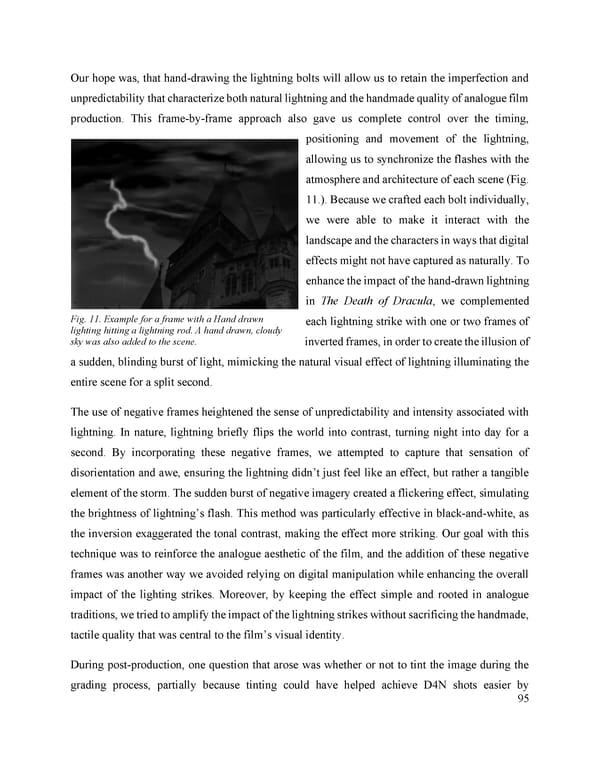Our hope was, that hand-drawing the lightning bolts will allow us to retain the imperfection and unpredictability that characterize both natural lightning and the handmade quality of analogue film production. This frame-by-frame approach also gave us complete control over the timing, positioning and movement of the lightning, allowing us to synchronize the flashes with the atmosphere and architecture of each scene (Fig. 11.). Because we crafted each bolt individually, we were able to make it interact with the landscape and the characters in ways that digital effects might not have captured as naturally. To enhance the impact of the hand-drawn lightning in The Death of Dracula, we complemented Fig. 11. Example for a frame with a Hand drawn each lightning strike with one or two frames of lighting hitting a lightning rod. A hand drawn, cloudy sky was also added to the scene. inverted frames, in order to create the illusion of a sudden, blinding burst of light, mimicking the natural visual effect of lightning illuminating the entire scene for a split second. The use of negative frames heightened the sense of unpredictability and intensity associated with lightning. In nature, lightning briefly flips the world into contrast, turning night into day for a second. By incorporating these negative frames, we attempted to capture that sensation of disorientation and awe, ensuring the lightning didn’t just feel like an effect, but rather a tangible element of the storm. The sudden burst of negative imagery created a flickering effect, simulating the brightness of lightning’s flash. This method was particularly effective in black-and-white, as the inversion exaggerated the tonal contrast, making the effect more striking. Our goal with this technique was to reinforce the analogue aesthetic of the film, and the addition of these negative frames was another way we avoided relying on digital manipulation while enhancing the overall impact of the lighting strikes. Moreover, by keeping the effect simple and rooted in analogue traditions, we tried to amplify the impact of the lightning strikes without sacrificing the handmade, tactile quality that was central to the film’s visual identity. During post-production, one question that arose was whether or not to tint the image during the grading process, partially because tinting could have helped achieve D4N shots easier by 95
 Lost Analogue: Exploring Film, Music, and Interdisciplinary Methods in Education Page 95 Page 97
Lost Analogue: Exploring Film, Music, and Interdisciplinary Methods in Education Page 95 Page 97